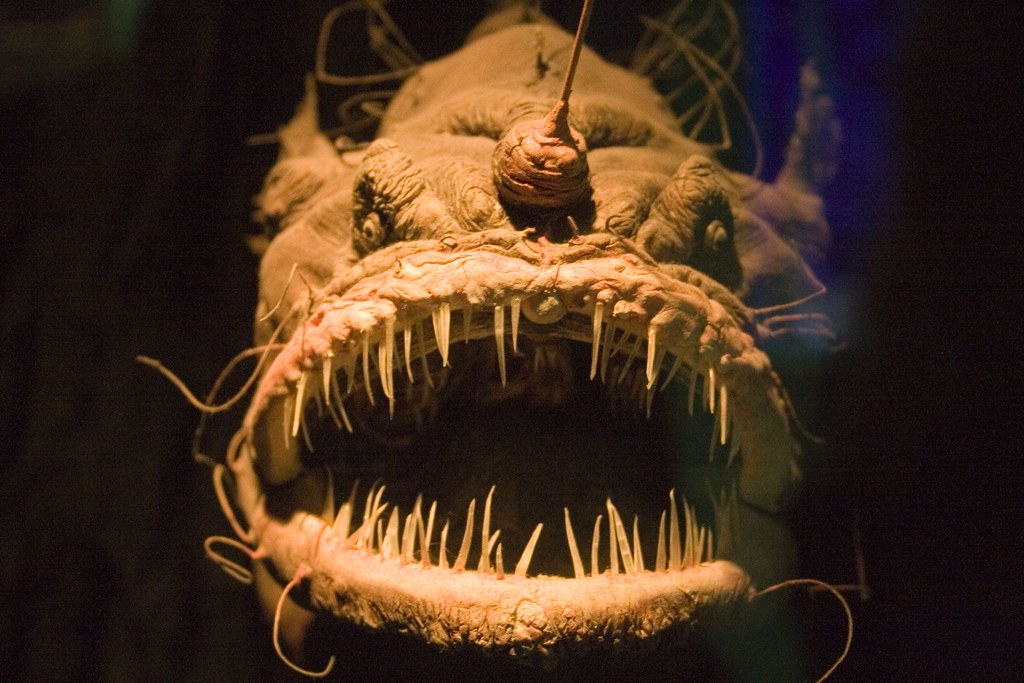

This phenomenon of parabiosis persists despite a genetic disparity between the male and the female that shows no signs of an immune response against the histoincompatible antigens. The male’s nutrients are provided by the female via the joined blood systems and, in turn, the male provides sperm on demand. Its blood system fuses with that of the female host, and from that point on it receives all its nutrients via the joined circulatory system.Ī female deep-sea anglerfish ( Photocorynus spiniceps) with a dwarf parasitic male fused to her back. Thereafter, the male loses its eyes, fins, and internal organs, except for its testes. While in some species, male attachment to females occurs temporarily and does not involve fusion of tissues, in other species, the male releases enzymes that dissolve the female’s tissue around his mouth, leading to anatomical joining of the male and female tissues -a naturally occurring form of parabiosis (see Figure 1). The free-swimming tiny male anglerfish can sniff the female’s waterborne pheromones and latch itself onto the female with its sharp teeth. Īn even more unusual and distinctive characteristic of many anglerfish species is related to their mode of reproduction. The extreme size variations are due to the sexual dimorphism in which tiny males are up to an order of magnitude smaller than their females. The length of the anglerfishes varies from 2 to 18 cm, with a few types growing up to 100 cm. The bioluminescent lure also functions as a male-attracting device, which increases the probability of finding mates in the vast oceanic space.

Thus, by pulsing the light and moving the lure back and forth, the anglerfish attracts crustaceans and fishes and snatches them before they have a chance to swallow the ēsca. Anglerfishes can wiggle their illicium while keeping their body motionless, to better mimic a living bait, and reveal their shiny lure on demand. Each species of anglerfish pairs with a unique species of luminescent bacteria, and the light, which is amplified by crystals and reflectors, is emitted through a transparent tissue. luxaltus), which take up residence in the ēsca. Instead, they acquire the ability to glow from symbiotic bio-luminescent bacteria, predominantly from the Enterovibrio family (such as E. Most anglerfishes are unable to produce light on their own. This fishing rod-like apparatus, termed illicium (from the Latin word “ Illicio”, which means “to entice”), is derived from a modified dorsal-fin spine which extends from the dorsal region of their head and is tipped with a sphere-shaped luminescent organ, called ēsca (which means “bait” in Latin). In addition, they have perfected their feeding strategy by developing a specialized luminescent lure organ that enables them to attract prey in the hostile environment of the dark ocean.

Their retractable jaw, lack of ribs, and overall pliable bodies enable them to feed on prey that is almost twice their own size. Most are characterized by having a globular body with a huge head and enormous crescent-shaped mouth that is filled with long, fang-like teeth. The morphology and the feeding strategies of the eerie-looking deep-sea anglerfishes ( Ceratioidei) have been shaped during millions of years of evolution in the eternal darkness of the deep oceans. While the exact mechanisms by which anglerfishes defend themselves against pathogens have not yet been deciphered, it is speculated that during evolution, anglerfishes adopted new immune strategies that compensate for the loss of B and T lymphocyte functions and enable them to resist infection by pathogens. These genetic alterations enabled anglerfishes to tolerate the histoincompatible tissue antigens of their mate and prevent the occurrence of reciprocal graft rejection responses. Recent studies demonstrated that the evolutionary processes that led to the unique mating strategy of anglerfishes coevolved with genetic changes that resulted in loss of functional genes encoding critical components of the adaptive immune system. An even more surprising phenomenon relates to the observation that joining of genetically disparate male and female anglerfishes does not evoke a strong anti-graft immune rejection response, which occurs in vertebrates following allogeneic parabiosis. This unusual phenomenon of sexual parasitism enables anglerfishes to maximize reproductive success in the vast and deep oceans, where females and males otherwise rarely meet. Reproduction in certain deep-sea anglerfishes involves the permanent attachment of dwarf males to much larger females and fusion of their tissues leading to the establishment of a shared circulatory system.


 0 kommentar(er)
0 kommentar(er)
